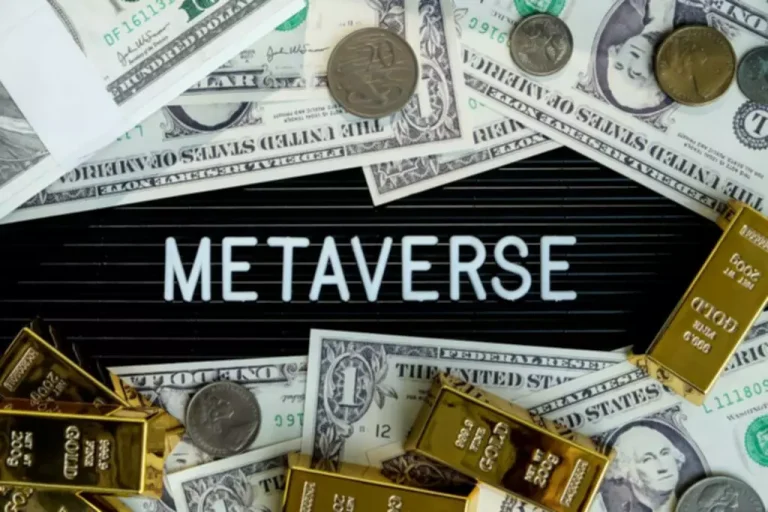Content
In the month of September, the parallel Ethereum blockchains, Mainnet (Execution Layer), and Consensus Layer (Beacon Chain) are expected to merge such that the blockchain switches from the PoW to the PoS system. The initial white paper that described Ethereum also spoke of using a PoS system stake to what is proof of stake validate the transactions on the blockchain. However, the platform was launched with the PoW system, with the plan to switch to PoS in the future. In comparison, the Proof of Stake (PoS) system relies on the network participants staking their crypto coin holdings, which can either be used as collateral or even destroyed if the user behaves dishonestly.

Navigating Market Downturns: How to Follow the Smart Money
Ethereum 2.0 refers to a set of updates that aimed to resolve issues surrounding limited scalability, speed, and the limitations of the Proof of Work consensus mechanism of the Ethereum network. The core ideas around Ethereum 2.0 originated from Vitalik Buterin, founder of Ethereum, and researcher Vlad Zamfir around the time of the Ethereum network’s creation. Validators worldwide verify data accuracy, making the network robust against localized disruptions. This approach ensures that no single point of failure can compromise the system, enhancing both security and reliability. Staked ETH is orders of magnitudes larger than the staking of all https://www.xcritical.com/ other traditional oracles combined.
Search code, repositories, users, issues, pull requests…
- Proponents also claim that proof of stake is more secure than proof of work.
- Bake gives you full control over your ETH and allows you to withdraw or sell your staked ETH any time, any day.
- For an emerging technology like blockchain, PoW has proven an extremely secure and trustworthy consensus mechanism.
- The primary reason why Proof of Stake has become popular with developers, as well as end users, is that it does not consume a significant amount of energy.
- This is done so that the probability of being selected as a proposer remains proportional to balance.
- After merging, the Mainnet enabled the running of smart contracts in the renewed Ethereum ecosystem, so that Ethereum was once again running smoothly on a single blockchain.
The mechanism also lowers network congestion and removes the rewards-based incentive PoW blockchains have. Proof-of-stake is a blockchain consensus mechanism for processing transactions and creating new blocks. A consensus mechanism is a method for validating entries into a distributed database Cryptocurrency wallet and keeping the database secure. In the case of cryptocurrency, the database is called a blockchain—so the consensus mechanism secures the blockchain. The POS blockchain networks do not need to spend high amounts of energy.
Energy Efficiency and Environmental Impact
However, people who staked were not allowed to withdraw their ETH until after the Merge. It was assumed that the Merge would allow stakers to finally withdraw, but that’s not the case. The Execution Layer Client listens to new transactions and executes them, while the Consensus Layer Client implements the PoS algorithm. While this is more cumbersome for node operators, the positive side is that both types of clients now exist in a variety of programming languages, which means we have more client diversity.
Bake offers no waiting times, competitive yields, and auto-compounding, helping you earn rewards on your staked ETH quickly and efficiently. To better understand this page, we recommend you first read up on consensus mechanisms. Since then, he has assisted over 100 companies in a variety of domains, including e-commerce, blockchain, cybersecurity, online marketing, and a lot more. In his free time, he likes playing games on his Xbox and scrolling through Quora. When a validator is down, they cannot participate in the consensus process. Since this is detrimental to the overall functioning of the network, it is penalized by the network via slashing.
In exchange for the work, they earn freshly minted ETH and portions of network transaction fees. Under Ethereum’s PoS, if a 51% attack occurred, the honest validators in the network could vote to disregard the altered blockchain and burn the offender(s) staked ETH. This incentivizes validators to act in good faith to benefit the cryptocurrency and the network. Anyone involved in the cryptocurrency space must understand these mechanisms, as they determine the fundamental operations of blockchain networks.
Cryptocurrencies have, therefore, been criticized for their wasteful use of energy while using the PoW system. This is a lucrative task that attracts a lot of interest and miners need to demonstrate work to earn the rewards. Networks pose complex mathematical problems that need to be solved and the miner who solves them first gets the right to add transactions to the block and earn the reward. This sets off a race among miners who end up setting up high-end computing infrastructure to beat other miners. Once a transaction is added to the block, the process is repeated for the rights to add the next block to the chain. Since decentralized networks do not have a central authority that can verify the accuracy of transactions, the network relies on a distributed network of participants to get this done.

The Proof-of-work blockchain consensus mechanism selects a node that updates the shared ledger or smart contract based on its performance in solving a complex mathematical problem. On some blockchains, several nodes can be picked to work at the same time. However, they often are assigned different parts of the ledger or smart contract.

The difficulty number represents the cumulative difficulty of all mined Ethereum blocks under the PoW system. In other words, it specifies the final PoW block, after which the PoS consensus takes over. It also helps when wallets used by ordinary users and stakers are highly secure so that an attacker can not steal coins on a large scale and have a significant stake at a low cost to them. Before Ethereum 2.0, the Ethereum network relied on the Ethereum mainnet, which had a limited number of transactions it was able to process – between 15 and 45 per second. Expanding to 64 shards decreased the time needed for validation of transactions, thereby improving not only the volume of transactions that can be processed, but also the speed of processing. After the launch of the Beacon Chain in Phase 0 came Phase 1, during which the Ethereum ecosystem gradually shifted from running everything on a single main blockchain to distributing its load across 64 shards.
This struct represents the vote in the latest (meaning highest-epoch) valid attestation received from a validator. To generate two subsets of validators for any given dynasty $d$, the forward validator set and the rear validator set are introduced. Every validator has an effective_balance (of at most 32 ETH), and its voting power is weighted by it. The precise epochs are kept around in order to calculate the current active validator set and the historical active validator set. In addition to making Ethereum more environmentally friendly, the developers have plans to make it more scalable too. In the upcoming updates, the developers aim to split the blockchain into different shards, much like the lanes of the highway.
This effective balances are update according to the following function. Requiring the withdrawal_credentials and the amount to be signed by the public key prevents some vectors of attack. This is why we have DepositData(Container), i.e., a signed DepositMessage(Container).
A base reward is the fundamental primary determiner of the issuance rate of Ethereum post-merge. The more validators are connected to Ethereum, the lower the base reward per validator. That is because the base reward is inversely proportional to the square root of the total balance of all Ethereum validators. Once a majority of the committee has attested the new block, it’s added to the blockchain and a “cross-link” is created to confirm its insertion.
This method reduces the reliance on energy-intensive computations and instead relies on the economic value staked by validators to secure the network. Many blockchain networks, including Bitcoin, use Proof of Work (PoW) as the original consensus mechanism. Satoshi Nakamoto introduced it in the Bitcoin whitepaper as a way to secure the network and validate transactions without a central authority.
